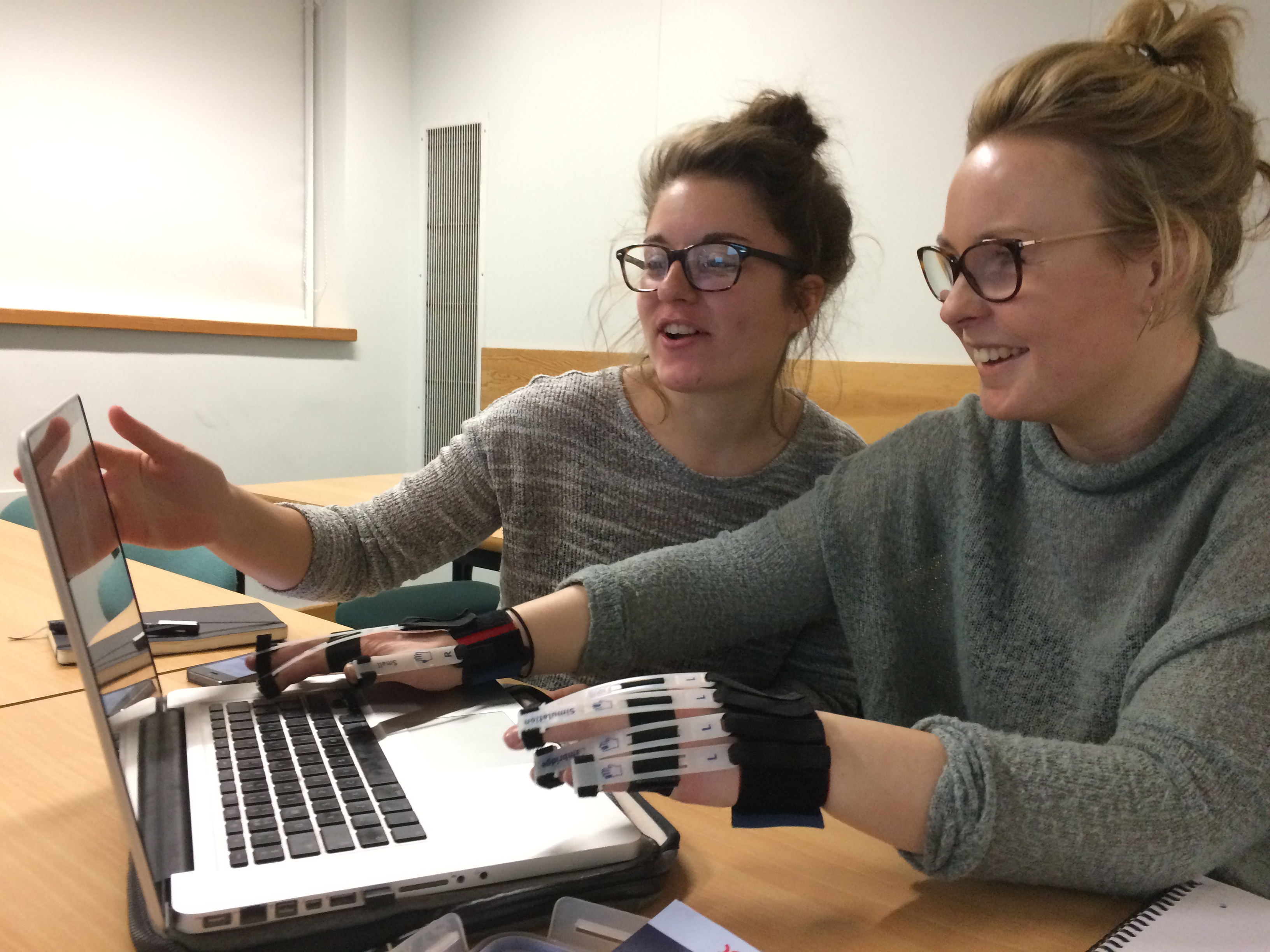This week we held two more BdB workshops for second year typography students. The workshops – led by Jeanne-Louise Moys – focused on:
- highlighting general considerations for best practice in inclusive graphic designers
- using various kinds of graphic differentiation to improve visual clarity and contrast for colourblind users and
- creating awareness of the needs and preferences of users with limited dexterity.
In the dexterity sessions, students wore simulation gloves to experience how conditions like arthritis affect how users can interact with digital devices (e.g. laptops and mobile phones) and paper artefacts. Working in pairs, they recorded and shared each other’s observations and interactions on a group discussion board in Blackboard.
Laptop interactions: Students noted how the gloves made them aware of how difficult, slow and uncomfortable it was to type on their laptop given that they could not bend their fingers as much as they usually do. They also highlighted that it was extremely difficult to scroll and use the trackpad on their laptops for navigation and doing Mac-based interactions like zooming in and out. Most of them said that clicking was ‘okay’ but noted that it could be difficult to select the right thing on screen and know for sure if they had activated it.
Mobile interactions: With their mobile phones, the students experimented with things they do every day from typing to games. They were particularly surprised at how difficult it was to pick up and grip the phone. Instead of using their thumbs for many actions, they had to use their index fingers. They also found it hard to swipe and had to rely on tap gestures to interact with apps. Some buttons became inaccessible. For example, they noted that they had to use a different button in order to be able to take a selfie and that it was difficult to access the phone’s on/off button.
Paper interactions: Students explored how using different paper sizes, stocks, print finishes and binding methods can make it easier or more difficult for users with limited dexterity to read booklets, leaflets, magazines and newspapers. Based on their experiential learning, students identified that:
- Smaller artefacts are easier for users to grip
- Heavier paper stocks make it easier for users to turn pages
- Resting an object on a table makes it easier for users to turn pages (although this factor needs to be considered in combination with reading distances)
- Grainy and matt paper stocks are easier to turn and handle than glossy stocks or print finishes.
These two workshops embedded inclusive design into yet another BA Graphic Communication module – Integrated Design Methods 2B (TY2INTB). Building on the workshops we held in Design Thinking (TY2DT) last term, our second year typography students have been introduced to a range of inclusive design considerations. They are now working on applying their knowledge to their design of mobile apps for tablet and mobile phone devices in their practical module Integrated Design Methods 2A (TY2INTA). One student, Alice Watkins, has decided to design her recipe app especially for users with visual impairments.
From a T&L perspective, using simulation gloves to interact with everyday objects provided students with a fun opportunity for task-based learning. Jeanne-Louise reported that it was particularly rewarding to observe how much the students learnt through their own discovery and how this enabled them to reflect on their design practice.
















